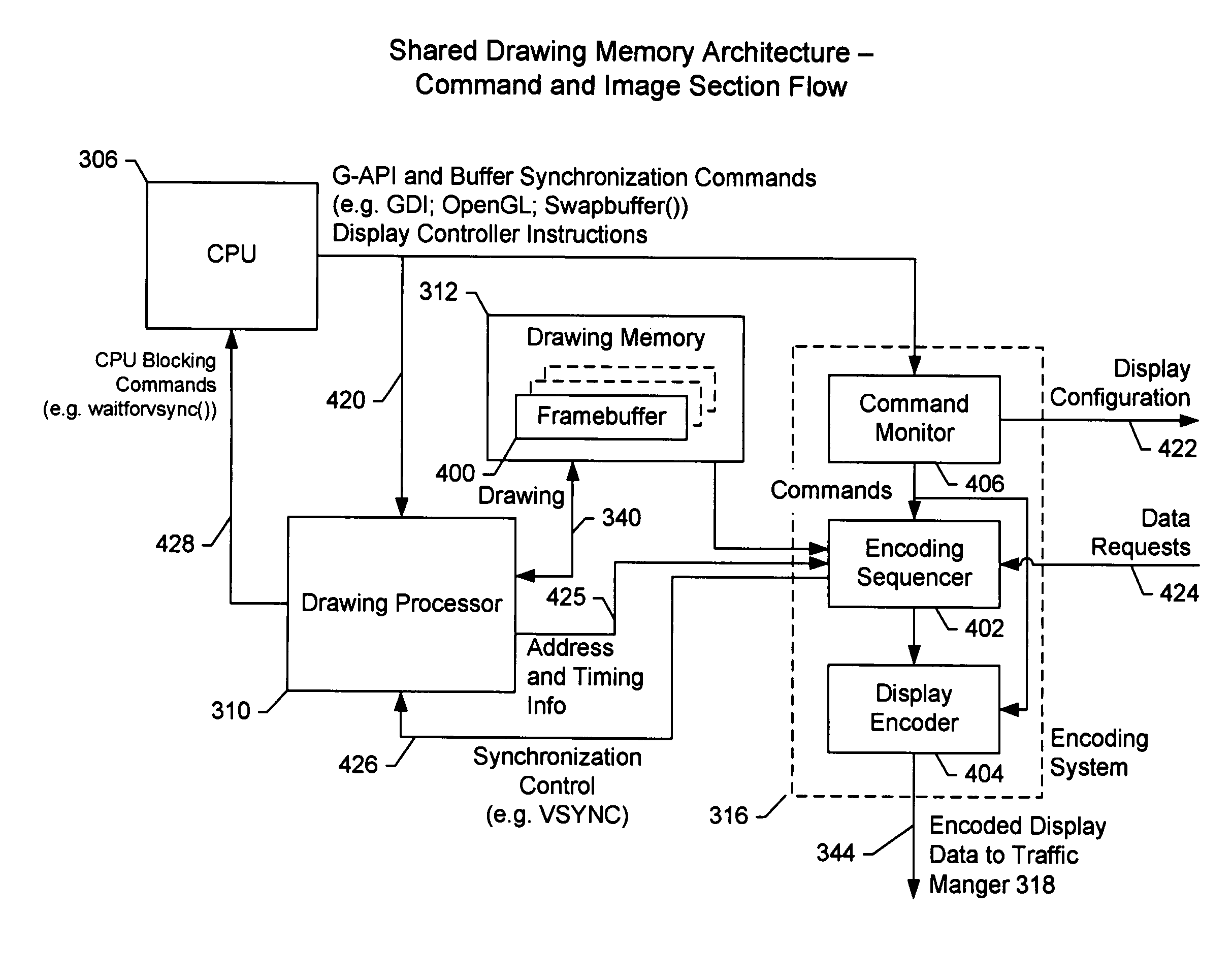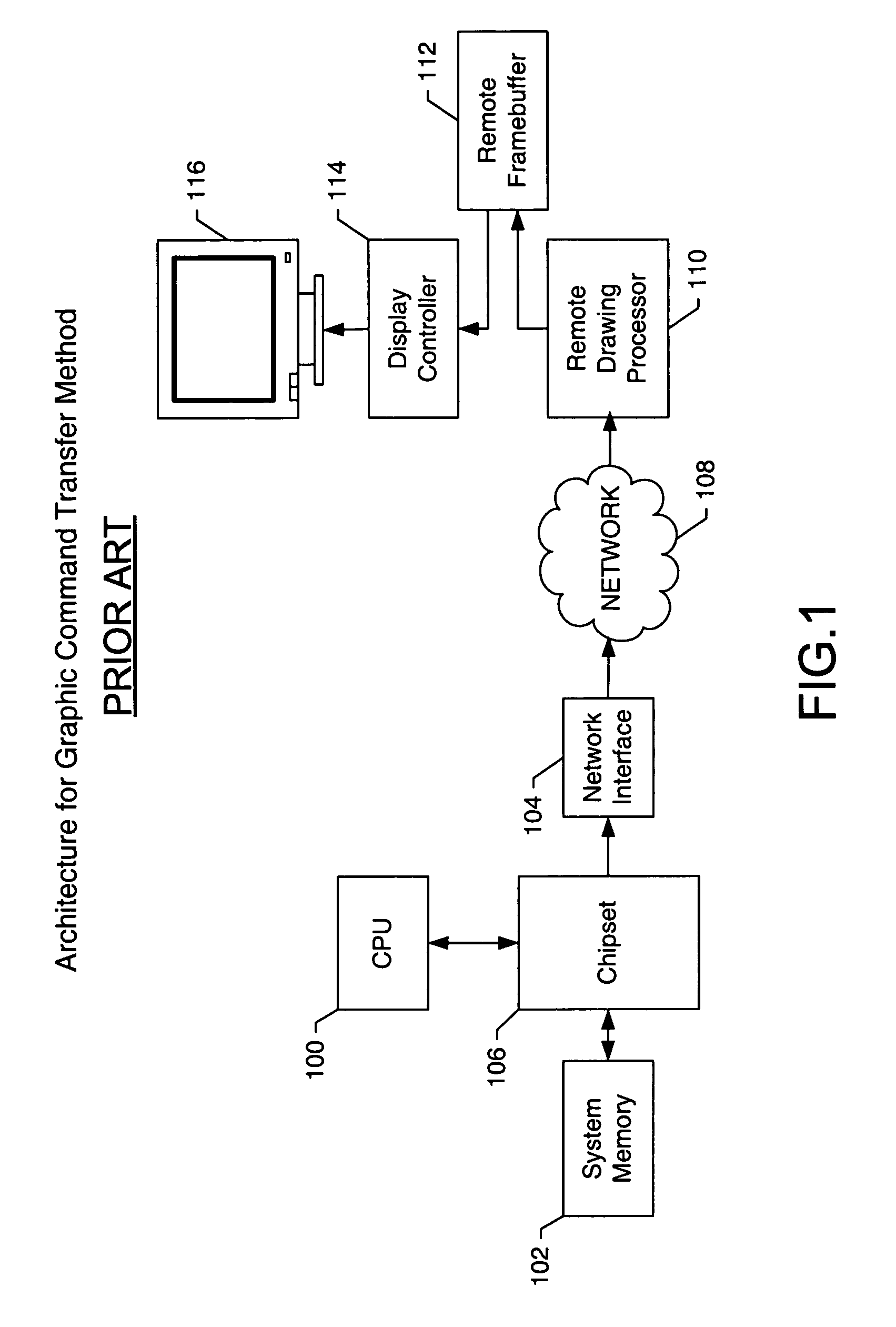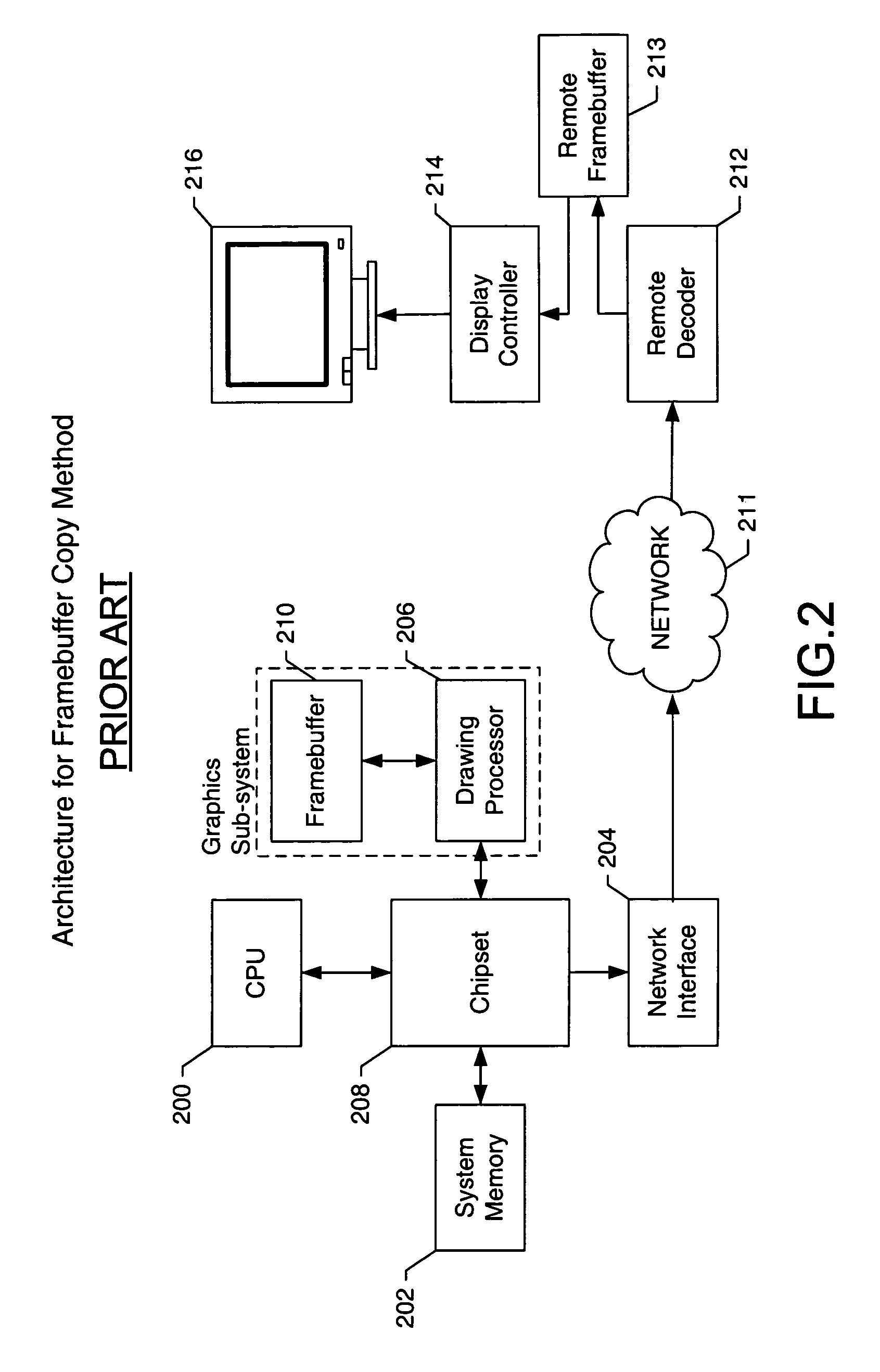Methods and apparatus for encoding a shared drawing memory
a shared drawing memory and image technology, applied in the field of encoding computer display images, can solve the problems of increasing the number of commands, system graphics capabilities are restricted by low-complexity graphics capabilities, and personal computers are very powerful but also complex and difficult to manage. , to achieve the effect of efficient communication
- Summary
- Abstract
- Description
- Claims
- Application Information
AI Technical Summary
Benefits of technology
Problems solved by technology
Method used
Image
Examples
Embodiment Construction
Architecture for a Server-Side GPU / Encoder for a Remote Display System
[0047]A traditional Graphics Processing Unit (GPU) is a slave device connected to a host CPU system, drawing memory and display system using an integrated display controller. In addition to the interface logic to support these connections, the GPU includes a drawing processor to handle the rendering or conversion of dynamic graphic scenes into a sequence of images represented as pixel data stored in a local memory for subsequent display. In the case of a device optimized for remote display applications, the device does not include the display controller function but rather requires an image encoder capable of compressing the image pixel data prior to sending it to the remote display. The following section identifies the difference in functional requirements between the drawing processor and the image encoder in the case of a remote display system.
Drawing Processor Architecture
[0048]The drawing processor receives a...
PUM
 Login to View More
Login to View More Abstract
Description
Claims
Application Information
 Login to View More
Login to View More - R&D
- Intellectual Property
- Life Sciences
- Materials
- Tech Scout
- Unparalleled Data Quality
- Higher Quality Content
- 60% Fewer Hallucinations
Browse by: Latest US Patents, China's latest patents, Technical Efficacy Thesaurus, Application Domain, Technology Topic, Popular Technical Reports.
© 2025 PatSnap. All rights reserved.Legal|Privacy policy|Modern Slavery Act Transparency Statement|Sitemap|About US| Contact US: help@patsnap.com



